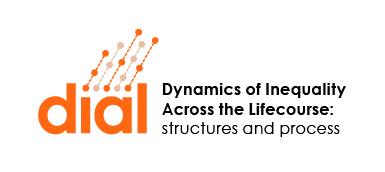Read a longer summary from Zachary Van Winkle’s website.
This paper aims to assess how parenthood wage gaps vary across individual lives for different gender and race groups in the United States. The research uses data from the National Longitudinal Survey of Youth (NLSY79 and NLSY97) covering the years 1979–2003 to map parenthood wage gaps for men and women aged 20-40.
The results show that White mothers in their late twenties with two or more children earned 20-30 percent less than their childless peers. For Black women with three or more children the pay penalty was around 20 percent and for Hispanic women around 25 percent, with the penalty concentrated in a brief age window around 30. For white women that this penalty lasted until they were in their mid-forties. Enduring penalties only occur for white mothers with many children, which, the researchers say indicates their advantage compared to women of colour, because the comparison is with the high earnings of childless white women, which are unattainable for childless women of colour. White women without children are likely employed and being promoted in occupations characterised by high skill levels and opportunities for high wage growth.
Men with two children earned more than their childless peers. For white men the figure was 50 percent more, dropping to 18 percent for Black men and 10 percent for Hispanic men. These premiums evened out over time and disappeared after the age of 30. The results point to slightly higher wage growth among childless men compared to young fathers within each racial group, most likely due to a selection effect: men with high earnings potential tend to select into fatherhood and marriage.
Concerning racialized gender inequalities over the life course, the findings indicate that inequalities between white mothers and fathers are large early in the life course when young white men reap the benefits of fatherhood and continue to increase as women bear the burden of motherhood. Inequalities between minority men and women seem to develop in a similar way with two important distinctions. First, differences between Black men and women, and Hispanic men and women, are smaller to begin with and increase to a lesser extent when compared to white men and women. This is because of smaller fatherhood premiums early in the life course and smaller motherhood penalties later in the life course for minority men and women. A second important distinction is that inequalities between minority men and women are shorter lived than for white men and women, mostly because motherhood penalties for Black and Hispanic women are less persistent than for white women.
The authors say the research demonstrates the importance of life course timing for motherhood wage penalties and fatherhood wage premiums for different family sizes across racial groups and indicate a need to dig deeper into what else might be at play such as discrimination, work and family preferences, or access to affordable childcare.
